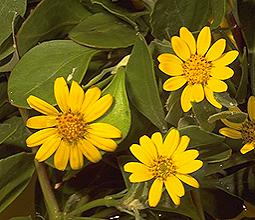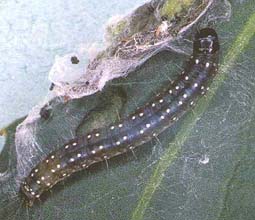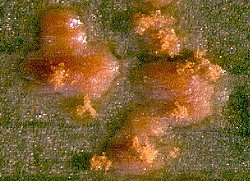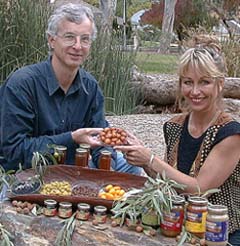|
[Front Page] [Features] [Departments] [Society Home] [Subscribe]

First Cuttings
Australian Plants Societies
Australian Plants online is brought to you by the 7 Societies that make up the Association of Societies for Growing Australian Plants (ASGAP).
Have you ever thought of joining one of the Societies? There is a Regional Society in every Australian state and also in the Australian Capital Territory. In addition, there are over 100 district groups established in centres throughout Australia.
Membership brings many benefits - regular district group and Regional newsletters, the colour journal "Australian Plants", access to free seed banks, regular meetings with expert speakers, bush walks, garden visits, advice from experienced growers, access to difficult to obtain plants and access to Study Groups.
Why not take a look at the Membership Page and see what we have to offer?

The "Gumnuts" Newsletter
Gumnuts is an email newsletter on Australian native plants which is published 4-6 weekly. It covers a wide range of topics - limited only by the imagination of its subscribers.
To subscribe - please see the "Subscribe" section of the current issue.
You may unsubscribe at any time.

Biological Control of Bitou Bush
A South African leaf rolling moth is the latest agent to take on Australia's worst coastal weed, Bitou bush (Chrysanthemoides monilifera ssp rotundata).
The leaf-rolling moth (Tortrix sp.) is the most damaging insect feeding on bitou bush in its homeland - South Africa. Tortrix is the sixth agent to be released on bitou infestations along the New South Wales coast.
 |
|
 |
|
Pest and predator!!
Bitou Bush (top) and Tortrix sp. (bottom) Photos: Brian Walters and CSIRO |
|
"We've had some good results from earlier agents, although not all of them have successful - like any biological control agent, it's not a silver bullet," says Anthony Swirepik, Distribution Officer from CSIRO Entomology.
"We don't know for certain when or how bitou bush was introduced into Australia. It was probably accidental through dumping of ballast by ships arriving from South Africa in the early 1900s. The earliest herbarium records indicate an introduction to the Stockton area near Newcastle, NSW, in about 1908.
"It was considered a useful plant to stabilise sand dunes and from 1946-1968 it was planted deliberately along the NSW coast by the Soil Conservation Service of NSW to aid in erosion control and post-mining rehabilitation.
"Unfortunately, it was too successful and ended up invading coastal habitats in South eastern Queensland, NSW and Lord Howe lsland.
"It's particularly prevalent on the central and north coasts of NSW. The total area infested in Australia is estimated now to be over 70,000 ha.
A collaborative project between CSIRO Entomology and NSW Agriculture (funded by National Heritage Trust) will rear, release and evaluate the performance of the leaf-rolling moth. The moth was first released on bitou bush near Grafton NSW in 2001. Subsequent releases have been made along the NSW coast from Moruya in the south to the Queensland border.
Biological control agents, like the tip moth, seed fly and leaf-rolling moth, complement each other and increase pressure on bitou bush, making it less competitive. Successful long-term, control of bitou bush will require a combination of methods, often site specific, which may include herbicide, hand pulling and/or fire.
Revegetation work may also be needed to complement natural regeneration.
CSIRO Media Release

Control of Bridal Creeper
Another major environmental weed is being tackled by biological control methods...
Bridal creeper is one of Australia's worst environmental weeds - but it is under attack from a creeping fungus.
Bridal creeper, Asparagus asparagoides, is found in every state across southern Australia. It is considered the major threat to biodiversity in southern temperate forest/woodland ecosystems. The weed's tuber mats and foliage make it very difficult for native vegetation to germinate and establish.
Introduced from South Africa in the 1850s as an ornamental plant, it is now out of control, smothering vast areas of natural bushland. It has been declared one of the 20 Weeds of National Significance.
CSIRO researchers in Western Australia are delighted with the progress of the biological control agent Puccinia myrsiphylli, a rust fungus which was first released at Floreat in WA in August 2000.
"The first release has caused extensive early leaf drop on bridal creeper at the site," says CSIRO's Kathryn Batchelor, who liases with community groups on the project.
 |
|
| Fruiting structures of the repetitive and most common stage (uredinia: orange pustules) of the bridal creeper rust fungus, Puccinia myrsiphylli. |
"With releases over the past 12 months across 23 other sites, we're hopeful that similar results will be seen across large areas of bridal creeper infestations.
"We've been providing starter cultures to community groups, who are doing a fantastic job helping CSIRO distribute the fungus", she says.
The rust works by infecting the leaves of the weed, causing localised yellowing of leaf tissue, and reducing the plant's ability to convert sunlight into energy. This forces the plant to divert nutrients to the infection site, reducing plant vigour and disrupting the flowering and fruiting processes.
The rust is active on bridal creeper from April/May through to November. It can survive through the dry hot conditions of summer as a hard-coated spore. The spores are wind borne, but its dispersal can be hastened by transferring infected foliage from one infestation to another by hand.
"By reducing photosynthesis due to yellowing of the leaves, coupled with early leaf drop, the reserves that the plant are able to divert to the tubers are greatly reduced."
CSIRO Media Release

Internet Discussion Groups
A number of discussion groups have been set up online for enthusiasts of specific groups of Australian plants. Why not try some of the following??

Indigenous Food Fund
 |
|
| CSIRO researchers Maarten Ryden and Yvonne Latham display Australian native foods that could become regular ingredients in the national diet |
|
Aboriginal communities, Coles Supermarkets and the national science agency, CSIRO, have joined forces to help create a sustainable industry based on native food production. The aim is to raise national awareness of the richness, diversity, nutritional and culinary virtues of bush foods, to help Aboriginal groups to establish new industries around it, to develop sustainable enterprises for the Outback, to help retain native species, and to fund research into novel foods.
The inspiration came from Coles managing director Alan Williams, following a visit to Arnhem Land last year and subsequent discussions with Aboriginal groups and the Northern Territory Government. Coles encouraged its suppliers to establish links with aboriginal communities for the supply of native foods and ingredients. Coles now sells three ranges of bush foods in selected supermarkets nationally.
However it was quickly realised that a significant increase in demand for indigenous foods could outstrip the available supply for some types of food, especially if it relied on wild harvesting. Discussions among the participants all pointed to the need for commercial cultivation and harvest.
To ensure Aboriginal groups have a share in this, Coles established an Indigenous Food Fund to be used by Aboriginal communities to improve cultivation and harvesting methods. The fund was launched by Mandawuy Yunupingu earlier this year with a $20,000 donation by Coles.
CSIRO researchers Dr Maarten Ryder and Yvonne Latham are working on ways to domesticate native plants, improve their yield and find the best ways to handle them at harvest.
Dr Ryder says the benefits of cultivating native foods include:
- conservation of wild resources and protection of biodiversity
- valuing Aboriginal knowledge
- potential for combatting salinity and land degradation
- creating incomes, jobs and new enterprises for Aboriginal communities
- encouraging diversity in traditional agriculture
- access to new sources of healthy food for the nation's diet.
CSIRO Media Release

"Extinct" plant found in Blue Mountains
As reported in the Sydney Morning Herald of 19 December 2001, Asterolasia buxifolia, a plant believed to be extinct for over 150 years, has been recently rediscovered in the Hartley area, west of the Blue Mountains. It was discovered by Sydney botanist Bob Makinson, who uncovered a cluster of about 50.
Asterolasia buxifolia was originally collected by botanist Allan Cunningham in the 1830s but had not been seen since. It has yellow, star-shaped flowers.
The species is closely related to A.asteriscophora, a species which occurs in New South Wales and Victoria.
 |
The genus Asterolasia consists of about 6 species and belongs to the Rutaceae. It is closely related to Boronia, Crowea and Phebalium. The flowers are star shaped with long, spreading stamens. This is Asterolasia hexapetala which is also quite rare in nature.
Select the thumbnail image or highlighted name for a higher resolution image (24k).
|

"Australian Plants"....in print!
 
The Society's 48 page, colour (printed) journal, "Australian Plants" has been published quarterly since 1959. It carries articles of interest to both amateur growers and professionals in botany and horticulture. Its authors include the leading professional and amateur researchers working in with the Australian flora and many beautiful and high quality photographs of Australian plants are published in its pages. Topics covered by the journal cover a wide range and include landscaping, growing, botany, propagation and conservation.
A subscription to the print version of "Australian Plants" is $19.80 annually for 4 issues (overseas $AUS32) including postage. To subscribe, print out the Subscription Form and post or fax the appropriate fee to the address indicated on the form.
Note that the contents of "Australian Plants" and "Australian Plants online"
are totally different.
These are some of the topics covered in recent issues of "Australian Plants":
Tasmanian Epacriadaceae
Australian Citrus
Growing Hakea in a Dry Climate
Olearia - Plants of the daisy family
The Olympic and Paralympic Bouquets
Eucalyptus cabinet timbers
Eremophila as Cut Flowers
Eremophila Seed Germination
Cassia and Senna in Australia
Australian Ferns - Growing them successfully
Smoke induced germination
Tea trees
The "Honeypot" Dryandras
Bernawarra Gardens - Tasmania
Plants for wet areas
Philotheca and Eriostemon - name changes
Lilly Pilly cultivars
Tropical legumes
Eucalyptus cinerea - lignotuber studies
Nutritional needs of Proteaceae
Labichea and Petalostylis
Xyris in Australia
Ferns in a garden
Yellow Waratah...Telopea truncata form
"Pines" of Tasmania
Tasmanian plants in horticulture in Britain
Eucalypts of Tasmania
Cut flower production trials
Emu Bush - Growing Eremophila
Kangaroo Paws - for colour
Creating a native garden...For beginners
Native honeysuckle; The genus Lambertia
Fertilizing for grevilleas
Creating homes for birds and mammals
Mistletoe; their natural biological control
|
Banksia Cultivation and Propagation
A Plantation Timber Industry
Hakea for Cultivation
Grafted Hakea
Ornamental Eucalypts for cut flower production
Leptospermum - colourful cultivars
Australian Rushes
Native Bees and Seed Dispersal
Sun Orchids - Thelymitra
Eucalyptus Foliage - Cut stems and postharvest
Vegetation of Macquarie Island
Grevillea - care and maintenance
Proteaceae of the rainforest
Richmond Birdwing butterfly
Terrestrial orchids of Royal National Park
Bladderworts - carnivorous plants
New Banksia releases
Edible wattle seeds - southern Australia
An introduction to legumes of Australia
Orchids as garden features
Native lowland grasslands of Tasmania
Orities - Tasmanian endemics
Gardening in clay
The daisy family
The tea tree oil industry
Riceflower - an everlasting daisy as a cut flower
Corkwood as a source of medicine
Outback Gardening - Achieving water efficiency
Pioneering Quandong as a fruit
Commercial cropping in the dry Interior
Bush food plantations
Rainforest plants - horticulture and bush tucker
Native fruits - Aboriginal food
About plant roots
NSW Christmas Bush: Cut flower industry
|

[Front Page] [Features] [Departments] [Society Home] [Subscribe]
Australian Plants online - December 2001
Association of Societies for Growing Australian Plants
|